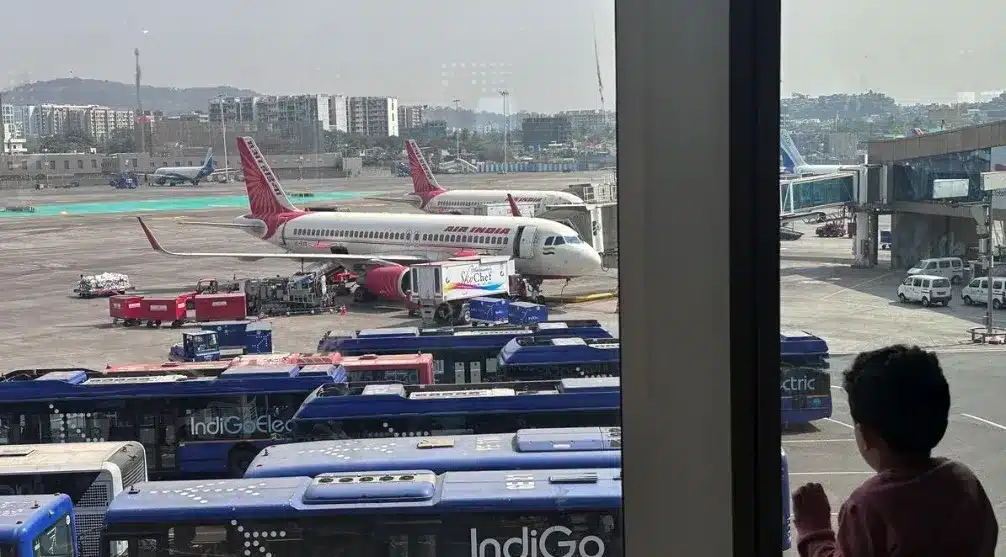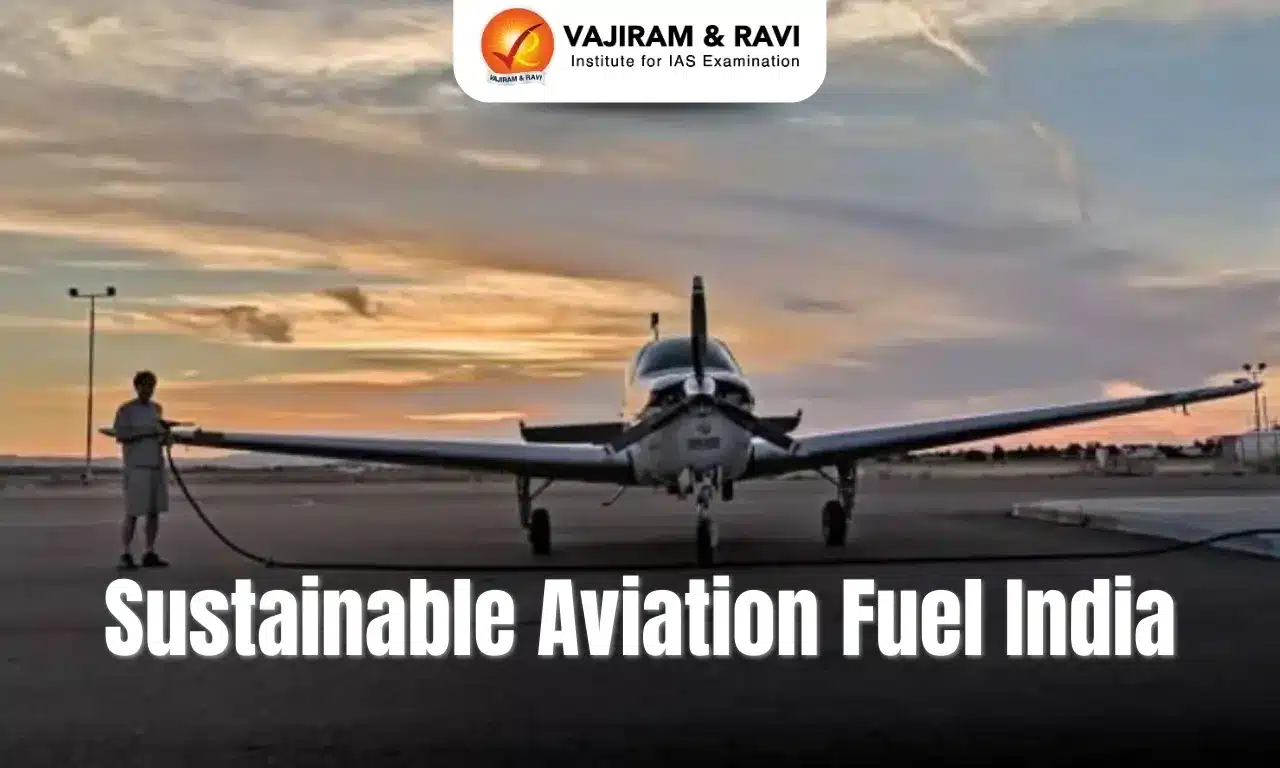What’s in today’s article?
- Why in News?
- Major Fleet Expansions and Infrastructure Investments
- Regulatory frameworks for the aviation sector
- Way forward
Why in News?
The privatisation of Air India in 2022, transferring ownership from the government to Tata Sons, marked a significant milestone and a bold reform since the second wave of liberalisation in 2004.
This strategic transformation is anticipated to stabilize the airline sector and positively impact the entire value chain, potentially extending benefits beyond India’s borders.
Major Fleet Expansions and Infrastructure Investments
- Fleet expansion
- Since 2022, significant developments in India’s airline sector include Air India’s order for a record 470 aircraft and IndiGo’s rapid growth with a fleet of about 370 aircraft and more than 980 on order.
- This could double the country’s fleet of nearly 700 aircraft by 2030.
- It took the Indian industry about 90 years from the time of the first commercial flight to reach a fleet size of 700 aircraft.
- But the rate of growth is so strong that carriers could add a further 600-700 aircraft in just the next 5-7 years.
- Robust airline system and growth in traffic
- Air India’s $6.5 billion investment and IndiGo’s record $1 billion profitability in FY2024 indicate a robust airline system.
- Despite supply-chain challenges, domestic and international traffic grew by 13% and 22%, respectively, in FY2024.
- Efforts to enhance airport infrastructure
- To support this expansion, India is enhancing airport infrastructure with a $11 billion investment pipeline.
- In the National Capital Region, Delhi International Airport will expand capacity to 130-140 million passengers annually, complemented by the new Noida International Airport opening in April 2025 with a 70 million capacity.
- The Mumbai Metropolitan Region will also have a dual airport system, handling 145 million passengers annually.
- The Adani Group is expanding capacity at six non-metro airports, and the Airports Authority of India is investing $4 billion to enhance non-metro capacity.
- Greenfield airports are also planned for Chennai and Pune.
Regulatory frameworks for the aviation sector
- National Civil Aviation Policy (NCAP) 2016 guides the Indian aviation sector.
- Aviation policy is broad-based in India and is dealt with by the Ministry of Civil Aviation under the legal framework of the Aircraft Act 1934, and Aircraft Rules 1937.
- The DGCA is the statutory regulatory authority which comes in for issues related to safety, licensing, airworthiness, and so on.
- Airports Authority of India (AAI) manages and operates airports and provides air traffic management services.
- Bureau of Civil Aviation Security (BCAS) is responsible for laying down standards and measures for the security of civil flights and airports.
- Airport Economic Regulatory Authority (AERA) regulates tariffs and other charges for aeronautical services provided at major airports.
- It also monitors performance standards of such services.
- Regional Connectivity Scheme (RCS) – UDAN (Ude Desh ka Aam Naagrik) aims to make air travel affordable and widespread by enhancing regional air connectivity through financial incentives, subsidies, and infrastructural support.
Way forward
- Provide incentives for investment in skilling, training, and education
- The rapid growth of India’s aviation industry could lead to skill shortages, particularly among technical staff like pilots, maintenance engineers, and technicians.
- The new DGCA duty and rest norms for pilots could increase pilot demand by 15%.
- There are also shortages in air-traffic controllers and security personnel.
- Thus, the Budget should provide incentives for investment in skilling, training, and education.
- Restructuring of institutions
- Restructuring the Directorate General of Civil Aviation and the Bureau of Civil Aviation Security is necessary to address challenges from technological disruptions and environmental issues.
- Corporatising air traffic control by hiving off Air Navigation Services from AAI could improve capital access for system investments.
- Rationalisation of taxes
- The Budget should consider rationalising taxes, which currently account for nearly 20% of an airline’s quarterly revenue, including state levies on aviation turbine fuel.
Q.1. What is Directorate General of Civil Aviation (DGCA)?
The Directorate General of Civil Aviation (DGCA) is India’s statutory regulatory authority overseeing civil aviation safety, airworthiness, licensing, and regulations, operating under the Ministry of Civil Aviation, ensuring compliance with the Aircraft Act 1934 and Aircraft Rules 1937.
Q.2. What is Regional Connectivity Scheme (RCS) – UDAN (Ude Desh ka Aam Naagrik)?
The Regional Connectivity Scheme (RCS) – UDAN (Ude Desh ka Aam Naagrik) aims to enhance regional air connectivity in India by making air travel affordable through financial incentives, subsidies, and infrastructural support, targeting underserved and unserved airports.
Source: Need a stronger aviation ecosystem to brace for 2X fleet expansion in 5-6 years | The Hindu
Last updated on August, 2025
→ UPSC Mains Admit Card 2025 has been released on 14th August at www.upsc.gov.in.
→ UPSC Mains 2025 will be conducted on 22nd August 2025.
→ UPSC Notification 2025 was released on 22nd January 2025.
→ UPSC Calendar 2026 is released on 15th May, 2025.
→ UPSC Prelims Question Paper 2025 and Unofficial Prelims Answer Key 2025 are available now.
→ UPSC Prelims Result 2025 is out now for the CSE held on 25 May 2025.
→ The UPSC Vacancy 2025 were released 1129, out of which 979 were for UPSC CSE and remaining 150 are for UPSC IFoS.
→ UPSC Prelims 2026 will be conducted on 24th May, 2026 & UPSC Mains 2026 will be conducted on 21st August 2026.
→ The UPSC Selection Process is of 3 stages-Prelims, Mains and Interview.
→ UPSC Result 2024 is released with latest UPSC Marksheet 2024. Check Now!
→ UPSC Toppers List 2024 is released now. Shakti Dubey is UPSC AIR 1 2024 Topper.
→ Also check Best IAS Coaching in Delhi















